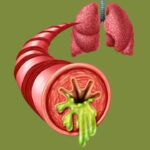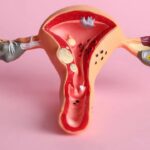Many people become accustomed to experiencing acid reflux over a long period, often dismissing it as a common occurrence. However, long-term gastroesophageal reflux disease (GERD) is far from harmless. It can significantly impact daily life and carries a high risk of complications if left untreated.
1. Stages of GERD Progression
GERD occurs when stomach acid and partially digested food flow back up into the esophagus. This condition progresses through five stages, each with increasing severity and potential harm.

Gastroesophageal reflux disease progresses through five stages, with increasing severity at each level.
1.1. Stage 0: Initial Reflux
In the early stages, acid reflux occurs infrequently, with minimal impact on the esophagus and no signs of inflammation. Symptoms such as belching and mild heartburn may occasionally occur but are often mistaken for normal physiological responses.
1.2. Stage A: Early Esophageal Damage
At this stage, the esophageal lining begins to show signs of mild damage due to reflux. Approximately 90% of individuals with GERD are diagnosed at this stage, experiencing symptoms such as acid regurgitation, difficulty swallowing, and burning sensations behind the breastbone. Early treatment, including medication, dietary changes, and lifestyle adjustments, is crucial to prevent the condition from worsening.
1.3. Stage B: Worsening Inflammation
As GERD progresses to stage B, the inflammation becomes more pronounced, and small erosions (less than 5mm) start to appear on the esophageal lining. These erosions may be scattered or close together. Symptoms at this stage include painful swallowing and a persistent sensation of something stuck in the throat. If untreated, the inflammation can cause the esophageal lining to become scarred, leading to a narrowing of the esophagus and increased difficulty swallowing, even soft foods.
1.4. Stage C: Barrett’s Esophagus
In stage C, GERD becomes more severe, leading to a condition known as Barrett’s esophagus, where the esophageal lining develops large ulcers. Individuals with Barrett’s esophagus often experience persistent heartburn, nausea, vomiting, and chest pain. This stage requires urgent medical attention as it significantly increases the risk of developing esophageal cancer.
1.5. Stage D: Advanced Damage
The final and most severe stage of GERD involves extensive scarring and deep ulcerations throughout the esophagus. Symptoms are more intense and include continuous heartburn, acid regurgitation, and severe nausea. At this stage, the risk of esophageal cancer is very high, making regular monitoring and treatment essential.
2. Complications of Long-Term GERD
Chronic GERD not only reduces the quality of life but also leads to several serious complications.
2.1. Esophagitis and Ulcers
Continuous acid reflux can erode the esophageal lining, leading to inflammation and ulceration. If left untreated, these ulcers can worsen, making it difficult to swallow and increasing the risk of infection.
2.2. Esophageal Strictures
When the inflammation and ulcers are not properly treated, scar tissue can form, leading to a narrowing of the esophagus. This condition, known as esophageal stricture, makes swallowing increasingly difficult and painful.
2.3. Respiratory Issues
Acid reflux can also affect the respiratory system, leading to complications such as chronic cough, laryngitis, sinusitis, and even pneumonia. Symptoms include hoarseness, wheezing, and a persistent sore throat.
2.4. Barrett’s Esophagus
Barrett’s esophagus is a precancerous condition where chronic acid exposure changes the cells in the esophageal lining, increasing the risk of esophageal cancer. This condition is often detected through endoscopy and biopsy.
2.5. Esophageal Cancer
The most dangerous complication of chronic GERD is esophageal cancer, especially in older adults. Symptoms are often subtle and may only become apparent when the disease is advanced, making early detection and treatment crucial.

Living with chronic acid reflux not only reduces quality of life but also leads to serious complications.
3. Diagnosing Chronic GERD
Accurately diagnosing long-term GERD involves several diagnostic methods:
3.1. Endoscopy
A flexible tube with a camera is used to examine the esophagus and stomach, allowing doctors to detect inflammation, ulcers, and Barrett’s esophagus.
3.2. Barium X-Ray
Patients swallow a barium solution, which coats the lining of the digestive tract, allowing for clear X-ray images that reveal strictures, tumors, and other abnormalities.
3.3. Esophageal 24-hour pH/Impedance Monitoring
This test measures acid levels in the esophagus over 24 hours, helping to confirm GERD and assess its severity.
3.4. High Resolution Esophageal Manometry (HRM)
This test measures the pressure and movement in the esophagus to evaluate the function of the esophageal sphincter and detect motility disorders.
4. Doctor’s Recommendations for Treating GERD
Experts emphasize that while GERD may seem like a minor issue, it requires diligent treatment to prevent complications. Key recommendations include:
– Early diagnosis and treatment are crucial.
– Adherence to prescribed medication and treatment plans.
– Lifestyle changes, including a healthy diet, stress management, and avoiding late-night meals.
– Regular endoscopic check-ups to monitor the esophagus and prevent cancer.

Medical experts warn that while acid reflux may seem simple, it is difficult to treat and has a high recurrence rate.
Long-term GERD should not be ignored, as proper treatment can prevent complications and improve the quality of life. If you experience persistent symptoms, seek medical evaluation to receive appropriate treatment and avoid serious complications.








